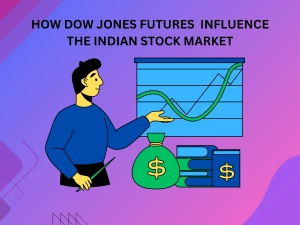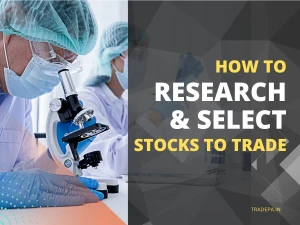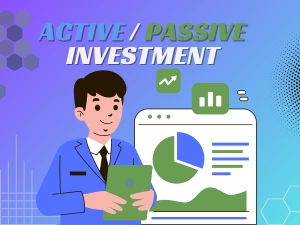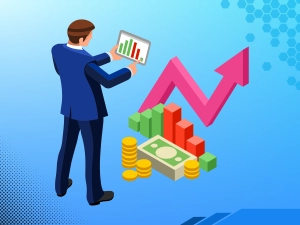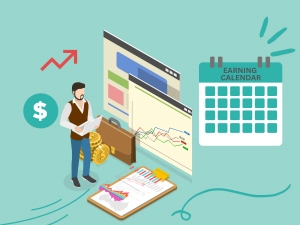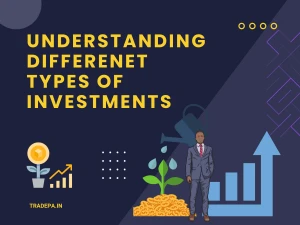Investing in Commodities and Precious Metals
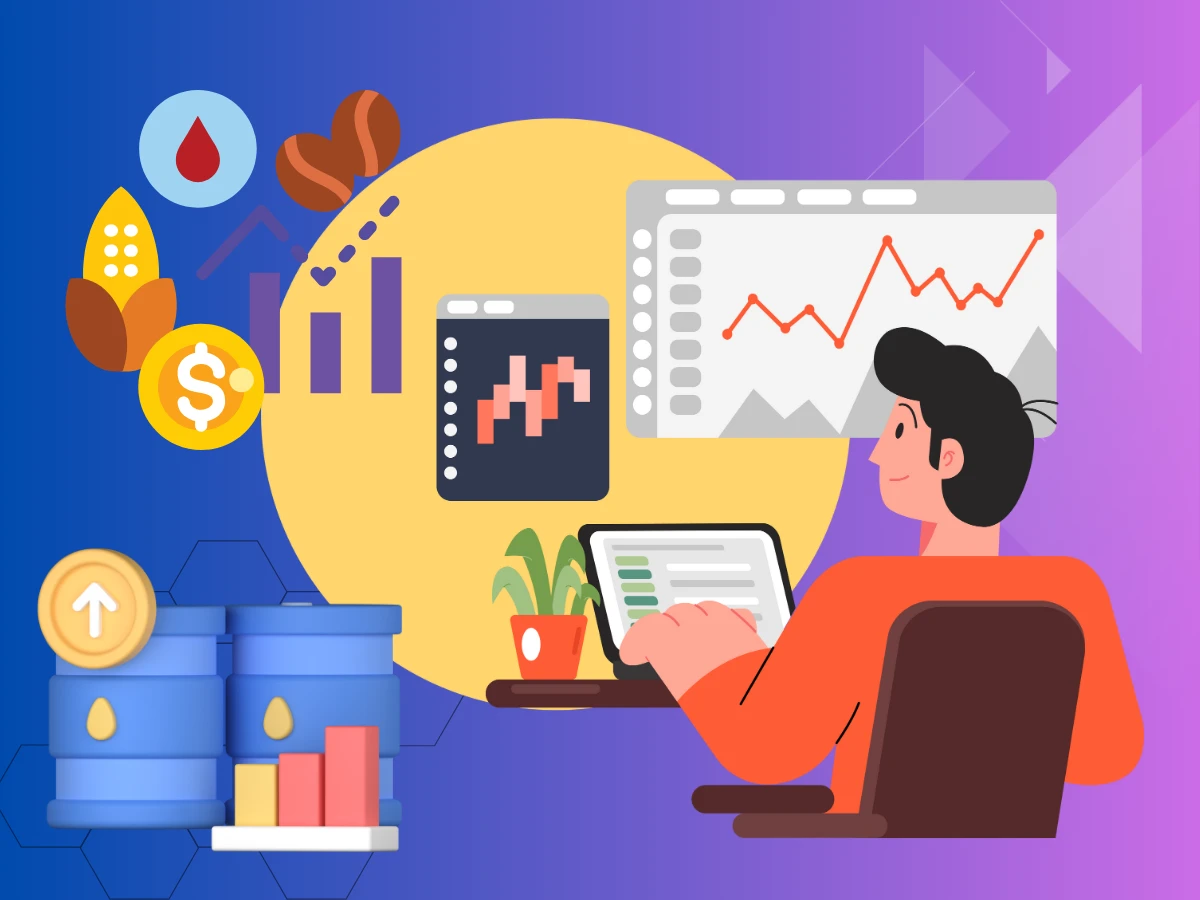
Introduction
Investing in commodities and precious metals has long been a strategy for diversifying portfolios and safeguarding wealth. Commodities such as oil, gas, agricultural products, and metals are fundamental to the global economy. Precious metals, such as gold, silver, platinum, and palladium, have intrinsic value and historical significance as a store of wealth and a hedge against economic instability.
Commodities and precious metals are tangible assets that often move independently of financial markets, providing a hedge against inflation and currency devaluation. For instance, when inflation erodes the purchasing power of paper currencies, the value of commodities and precious metals typically rises, maintaining purchasing power. This attribute makes them particularly attractive during economic uncertainty or market volatility.
Investing in these assets can be done in various ways, from purchasing physical metals or commodities to trading futures contracts and investing in ETFs or mining stocks. Each method has its advantages and considerations. Understanding the fundamentals of these markets is crucial for beginners to make informed investment decisions.
Understanding Commodities
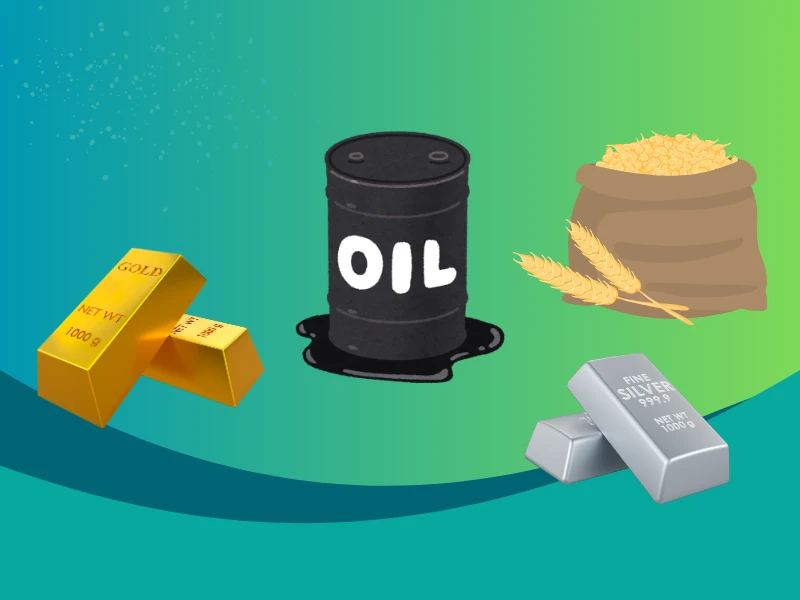
Commodities are essential goods that are interchangeable with other goods of the same type. Forming the foundation for producing various products and services. There are two main types of Commodities:
1. Hard Commodities: Energy, Metals
Hard commodities are essential to industrial processes and energy production. Metals like gold, silver, copper, and platinum are used in various applications, from jewelry and electronics to the automotive and construction industries. Gold, in particular, has been historically valued for its rarity and durability, making it a favoured choice for investment. Energy commodities, like crude oil, natural gas, and coal, are the primary energy sources for transportation, heating, and electricity generation. Supply and demand dynamics, geopolitical events, technological advancements, and economic policies influence the prices of hard commodities.
2. Soft Commodities: Agriculture, Livestock
Soft commodities are crucial in the global food supply and agricultural industry. Agricultural products like grains (wheat, corn, rice), beverages (coffee, cocoa, tea), and fibers (cotton, wool) are essential for human consumption and industrial use. Livestock commodities include animals raised for meat, dairy, and other products, such as cattle, pigs, and poultry. The prices of soft commodities are affected by various factors, including weather conditions, crop yields, pest outbreaks, and changes in dietary trends. These commodities are often traded on commodity exchanges, where buyers and sellers negotiate contracts for future delivery.
Role of Commodities in the Global Economy
Commodities are integral to the functioning of the global economy. They provide the raw materials necessary for manufacturing, construction, and energy production, supporting economic growth and development. Trading commodities on global markets helps establish prices that reflect supply and demand conditions, ensuring efficient allocation of resources. Moreover, commodities serve as a hedge against inflation and currency fluctuations, offering investors a way to protect their wealth. For countries that produce and export commodities, these resources can be a significant source of revenue and economic stability. Conversely, countries that import commodities depend on stable and affordable supplies to meet their needs.
Why Invest in Commodities and Precious Metals?
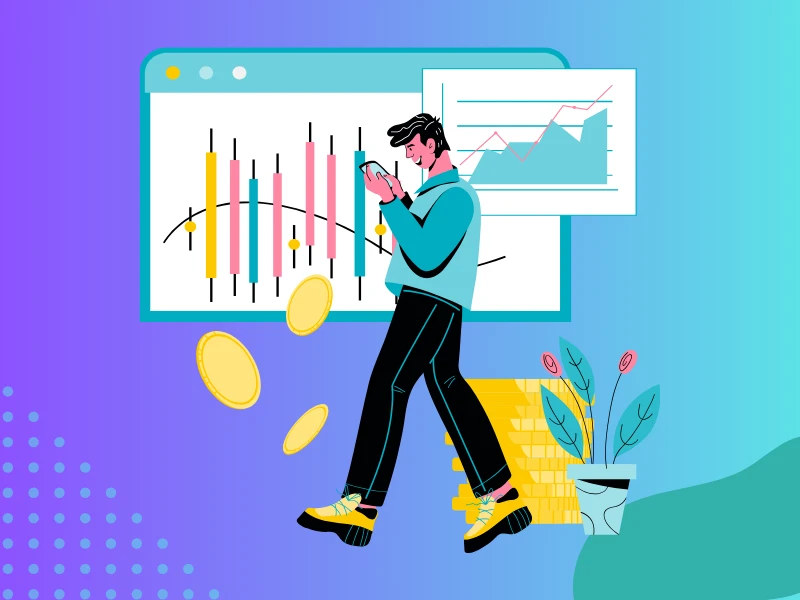
1. Hedge Against Inflation and Currency Fluctuations
- Protection Against Inflation: Commodities and precious metals tend to rise in value when inflation rates increase. This makes them effective at preserving purchasing power over time. For example, gold prices often go up during inflationary periods, providing a stable store of value.
- Currency Fluctuations: When a local currency weakens, the value of commodities, which are typically priced in stable global currencies like the US dollar, can rise in local currency terms. This can help offset the losses due to currency depreciation, providing a financial buffer for investors.
- Stable Investment Option: By holding commodities and precious metals, investors can protect their portfolios from the adverse effects of inflation and currency fluctuations, ensuring greater financial stability.
2. Safe Haven During Economic Uncertainty
- Intrinsic Value: Precious metals like gold and silver possess intrinsic value, making them reliable assets during economic downturns. Unlike stocks and bonds, their value is not directly tied to corporate performance or market sentiment.
- Crisis Protection: During periods of financial instability, geopolitical tensions, or economic recessions, the prices of precious metals typically increase as investors seek safe-haven assets. This helps preserve capital when other investments are underperforming.
- Peace of Mind: Investing in commodities and precious metals can offer investors a sense of security during uncertain times, as these assets are known for their ability to retain value when other markets are volatile.
3. Portfolio Diversification Benefits
- Low Correlation with Traditional Assets: Commodities and precious metals often have low or negative correlations with traditional asset classes like stocks and bonds. This means their prices sometimes move in different directions than these other investments, reducing overall portfolio risk.
- Economic Cycle Exposure: Investors can benefit from different economic cycles by including commodities and precious metals in a portfolio. For instance, commodity prices may rise during economic growth, while precious metals can perform well during downturns.
- Stabilized Returns: Diversifying with these assets helps to stabilize portfolio returns over the long term, reducing the impact of market volatility. This can particularly benefit beginners looking to build a resilient investment strategy.
4. Long-term Value Appreciation
- Historical Performance: Precious metals like gold and silver have a long history of maintaining and increasing their value over time. They have been used as stores of value for thousands of years, making them reliable long-term investments.
- Increasing Global Demand: Commodities linked to essential resources, such as energy and agriculture, have the potential for significant value appreciation as global demand rises. Population growth and economic development drive the need for these raw materials, pushing prices higher.
- Wealth Building: Investing in commodities and precious metals can capitalize on global economic trends, offering substantial returns over the long term. This potential for appreciation makes them attractive assets for building and sustaining wealth.
How to Invest in Commodities and Precious Metals
Physical Ownership: Bars, Coins, and Jewelry
Pros:
- Tangible Asset: Physical commodities and precious metals, such as bars, coins, and jewelry, provide security because you can hold and store them.
- No Counterparty Risk: Unlike financial instruments, physical assets are not dependent on another party's ability to fulfil a contract, reducing certain types of risk.
- Inflation Hedge: Physical precious metals often retain their value over time and can hedge against inflation and currency devaluation.
Cons:
- Storage and Security: Safely storing physical commodities and precious metals requires secure facilities, which can be expensive and inconvenient.
- Liquidity Issues: Selling physical assets quickly can sometimes be challenging, and finding a buyer at the desired price may take time.
- Additional Costs: Purchasing physical commodities involves extra costs such as insurance, storage fees, and potential markups from dealers.
Commodity Futures and Options
Commodity futures are contracts to buy or sell a specific quantity (e.g. 100) of a commodity at a predetermined price (e.g. $50) on a future date. They are standardized and traded on exchanges.
Example: An investor agrees to purchase 100 barrels of oil at $50 per barrel three months from now, regardless of the market price at that future date.
Risks and Rewards of Trading Futures
Rewards:
- High Leverage: Futures contracts allow investors to control large amounts of a commodity with a relatively small investment, potentially leading to significant profits.
- Diversification: Futures can help diversify an investment portfolio, reducing overall risk by adding exposure to different asset classes.
- Hedging: Businesses and investors can use futures to hedge against price fluctuations in commodities they produce or consume.
Risks:
- High Volatility: Futures markets can be extremely volatile, resulting in significant gains or losses within a short time frame.
- Complexity: Understanding and trading futures requires significant expertise and knowledge, making them less suitable for beginners.
Exchange-Traded Funds (ETFs) and Mutual Funds
ETFs hold assets such as commodities, precious metals, or commodity-related securities. Examples: SPDR Gold Shares (GLD) and iShares Silver Trust (SLV) are popular ETFs that track the price of gold and silver, respectively.
Advantages of Investing Through ETFs
- Liquidity: ETFs can be traded on stock exchanges throughout the trading day, offering high liquidity and ease of access.
- Diversification: ETFs often hold various assets within the commodity sector, providing instant diversification.
- Lower Costs: Compared to physical ownership, ETFs generally have lower costs related to storage and insurance.
- Convenience: Investing in ETFs is straightforward, as they can be purchased through most brokerage accounts without special accounts or contracts.
Risks and Challenges in Commodity and Precious Metal Investing
Market Volatility and Price Fluctuations
- High Volatility: Commodities and precious metals markets are known for their high volatility. Prices can fluctuate widely due to factors such as changes in geopolitical events, supply and demand, economic data, and market sentiment. Examples: Oil prices can spike due to geopolitical tensions in oil-producing regions, while gold prices might soar during financial crises as investors seek safe-haven assets.
- Impact on Investments: This volatility can lead to significant gains but also poses the risk of substantial losses. Predicting market movements requires extensive knowledge and experience, which can be challenging for beginners.
- Mitigation Strategies: Investors can manage volatility risks by diversifying their portfolios, using stop-loss orders, and staying informed about market trends and economic indicators.
Storage and Security Concerns for Physical Assets
- Physical Storage: Holding physical commodities and precious metals like gold bars, coins, or agricultural products requires secure storage solutions. This can include safe deposit boxes, private vaults, or specialized storage facilities.
- Costs: Secure storage can be expensive, with costs for vault services, insurance, and transportation adding to the overall investment.
- Security Risks: Physical assets are susceptible to theft, damage, and loss. Ensuring their security requires robust measures, including advanced security systems and insurance coverage.
- Convenience Issues: Storing and managing physical commodities can be inconvenient compared to digital or paper investments. It requires logistics and careful planning to ensure safety and accessibility.
Regulatory and Compliance Issues
- Regulatory Environment: The commodity and precious metals markets are subject to distinct regulations and compliance requirements, varying significantly across countries and regions.
- Compliance Costs: Adhering to these regulations can involve substantial costs, including legal fees, compliance audits, and reporting requirements.
- Market Access: Regulations can impact market access, with certain commodities subject to import/export restrictions, tariffs, and trade barriers.
Environmental and Ethical Considerations
- Environmental Impact: The extraction and production of commodities and precious metals can have significant environmental impacts, including deforestation, pollution, and habitat destruction. This is particularly true for mining activities and large-scale agricultural operations.
- Sustainability Initiatives: Investors are increasingly considering the environmental sustainability of their investments. Choosing companies and products that adhere to environmentally friendly practices can mitigate some of these concerns.
- Ethical Concerns: Producing certain commodities, such as conflict minerals and ethically questionable agricultural practices, can raise ethical issues. Investors may face moral dilemmas about supporting industries that engage in exploitative or harmful practices.
- Responsible Investing: To address these concerns, investors can adopt responsible investing strategies, focusing on companies with substantial environmental, social, and governance (ESG) practices. This approach addresses ethical considerations and can contribute to long-term sustainable returns.
Conclusion
Investing in commodities and precious metals offers a unique blend of opportunities and challenges. These assets can hedge against inflation and currency fluctuations, provide a safe haven during economic uncertainty, and contribute significantly to portfolio diversification. The potential for long-term value appreciation makes them attractive components of a well-rounded investment strategy.
Understanding how to invest in commodities and precious metals is crucial for beginners. While providing tangible security, physical ownership comes with storage and security concerns. Commodity futures and options offer high leverage and entail significant risks. Exchange-traded funds (ETFs) and mutual funds provide convenient, diversified access to these assets with lower costs and greater liquidity.
However, investors must also be mindful of the inherent risks and challenges, including market volatility, regulatory complexities, and environmental and ethical considerations. By adopting a well-informed and strategic approach, investors can effectively navigate these risks and harness the benefits of investing in commodities and precious metals.
Incorporating commodities and precious metals into an investment portfolio can enhance stability, growth, and resilience. As with any investment, due diligence, continuous learning, and prudent risk management are key to long-term success.


